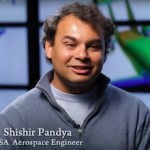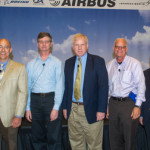In this video, NEC’s Oliver Tennert and AMD’s Dan Bounds describe how the two companies are developing high density computing solutions using AMD EPYC processors and liquid cooling for the aerospace and automotive industries. “More and more datacenters put a lot of efforts into reducing their cooling costs even further by making the leap to direct hot-water cooling. In this concept the water has an inlet temperature of up to 45 degrees Celsius and directly cools CPU, memory and other equipment by elements that are part of a closed water circuit. NEC works together with AMD to enable the best solution for each datacenter.”
Video: Rescale Night Showcases HPC in the Cloud
“Billed as an exposition into ‘The Future of Cloud HPC Simulation,’ the event brought together experts in high-performance computing and simulation, cloud computing technologists, startup founders, and VC investors across the technology landscape. In addition to product demonstrations with Rescale engineers, including the popular Deep Learning workshop led by Mark Whitney, Rescale Director of Algorithms, booths featuring ANSYS, Microsoft Azure, Data Collective, and Microsoft Ventures offered interactive sessions for attendees.”
HPC Matters to Aerospace
In this video from the SC15 HPC Matters series, NASA Aerospace Engineer Dr. Shishir Pandya describes how high performance computing helps advance airplane and rocket technologies. “Why does high-performance computing matter? Because science matters! Discovery matters! Human beings are seekers, questers, questioners. And when we get answers, we ask bigger questions. HPC extends our reach, putting more knowledge, more discovery, and more innovation within our grasp. With HPC, the future is ours to create! HPC Matters!”
Video: Panel Discussion on Supercomputing for Aerospace
In this video from the AIAA Aviation Conference 2015, panelists discuss Supercomputing: Roadmap and its Future Role in Aerospace Engineering. “Supercomputing has made significant contributions in aerospace engineering in recent decades, including advances in computational fluid dynamics that has fundamentally altered the way aircraft are designed. And the relentless growth in high-performance computing power holds promise of huge leaps in engine performance and other aerospace technology.”







